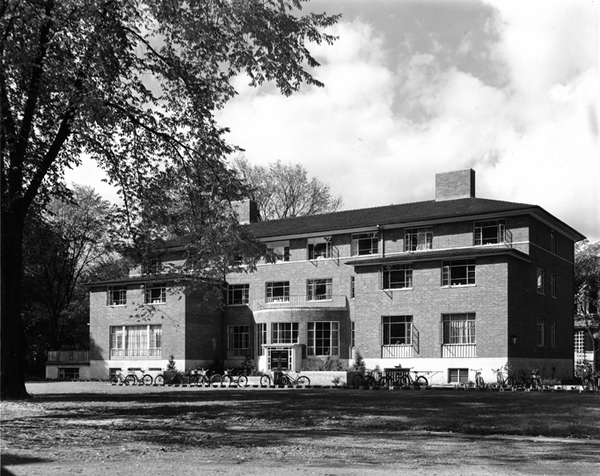Harkness House
Date
1950-presentLocation
113 West College StreetArchitects/Collaborators
Eldredge Snyder (1901-1967), New York City (architect)Style
Contemporary
History
This three-story, mid-20th century dormitory was designed by Eldredge Snyder, who also designed the Jones Field House (demolished) and the Service Building. The front/east facade features a central entry, which has a rounded, projecting bay, which has a further projected entry/door. It was originally designated as a women's residence hall from its opening in 1950 to 1967, when it became the fourth Oberlin housing and dining co-op. In 1979, Harkness became the first Oberlin co-op to use consensus, a decision process that soon spread throughout the Oberlin Student Cooperative Association (OSCA). The very next year, Harkness voted for the first time to use anarchy as its system of government, a decidedly less successful venture. Also in 1979, Harkness created the Contraceptive Co-op, which eventually morphed into today’s Sexual Information Center. In the mid-1990s, Harkness became the first OSCA co-op to have an elected head cook system. Now, as for the past many years, Harkness is a vegetarian co-op with vegan options at every meal. Harkness also houses 64 people.Sources
Janet Ackerman and Jym Sandberg, Harkness web page, OSCA website, accessed May 22, 2015.
Ohio Historic Inventory for Harkness House by Laurie Stein, Ohio HIstoric Preservation Office, 10/26/2005, accessed from the Oberlin Heritage Center website, May 22, 2015.
Geolocation
Image Description
Black and white, gelatin silver 8 x 10 in. vintage print, 1950s
(© Oberlin College Archives, RG 32/4)

